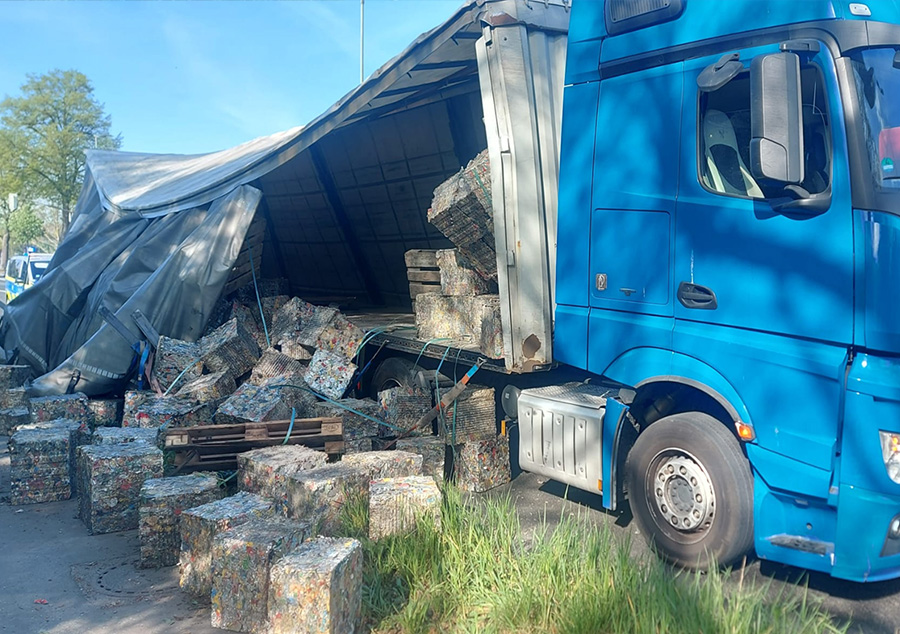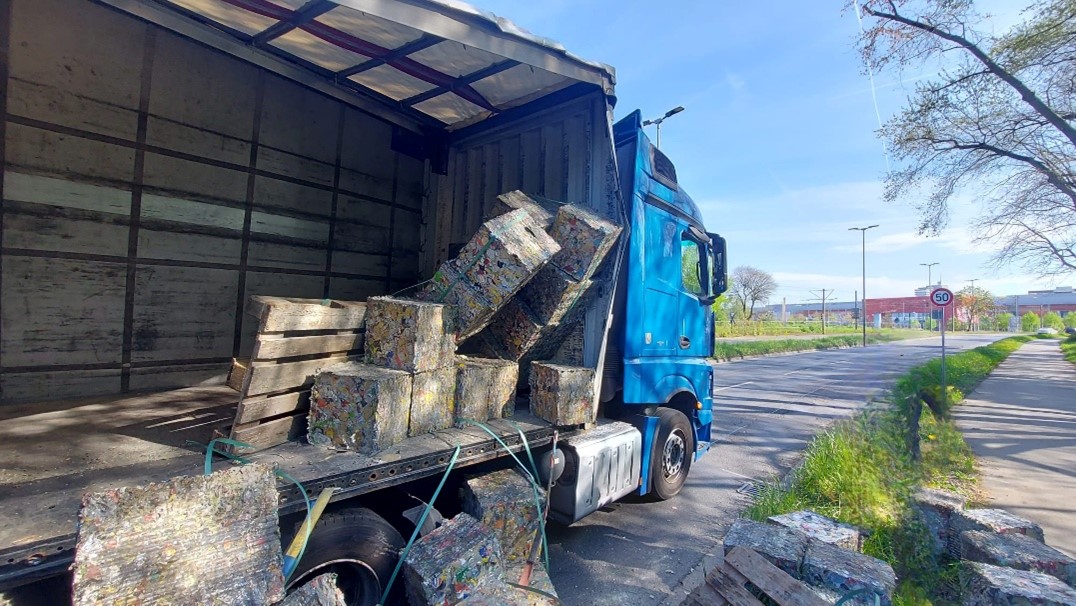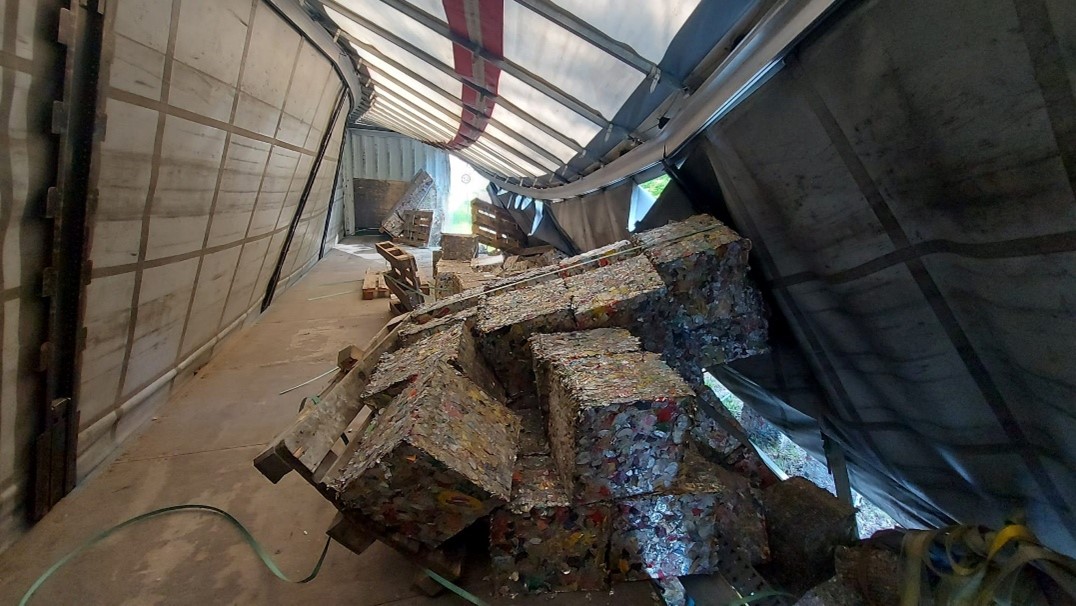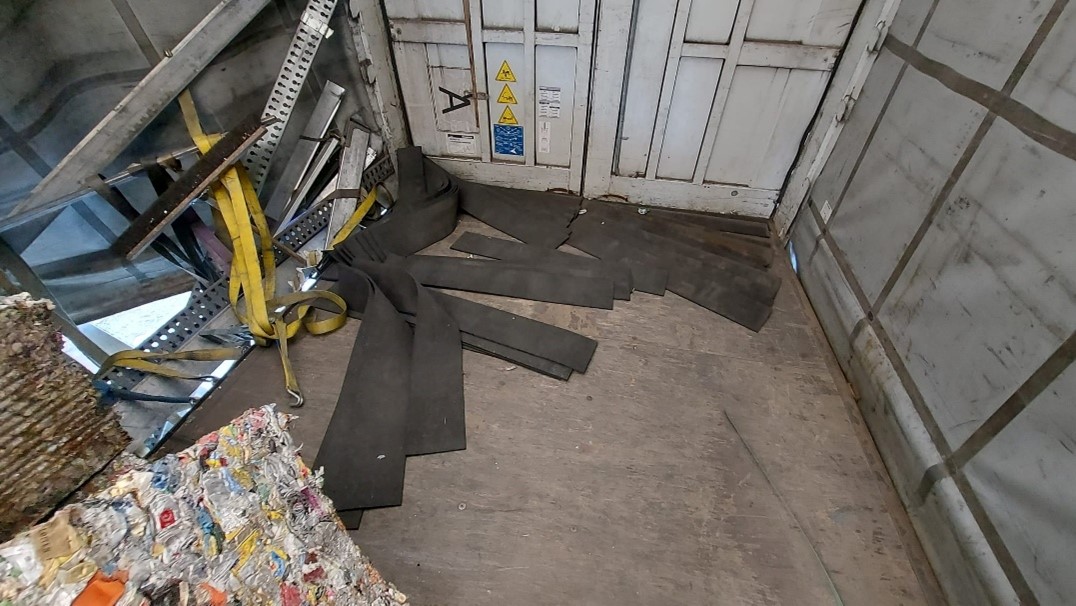| Photo of the month – September 2025 |
[German version] |
An appointment with fate in a gentle left-hand bend

Figure 1 – [KLSK – Timm Kehrbaum, Neuss police]
Here, we see some 21 tonnes of white metal cubes that have left the loading bed.
This is compacted metal waste: brittle, sharp-edged and heavy! Each cube weighs approximately 72kg.
They were loaded on europallets 32 at a time. Four layers on top of one another, unevenly stowed. Weight per load unit: approximately 2.3 tonnes.

Figure 2 – [KLSK – Timm Kehrbaum, Neuss police]
The photos show the remains of what started out as load units. The plastic straps were clearly placed over the sharp-edged waste metal cubes without any edge protection.
Then, for reasons of load distribution, the pallets were loaded in a row along the middle of the loading surface.
The photos show that the pallets were more than 160 cm high. Loaded longitudinally in the direction of travel like this, they were in danger of tipping to the side. (Rule of thumb for homogeneous loading: height more than twice width)
A lashing belt with protective sleeves was attached over every second pallet as a “tie-down lashing”.
We have no idea what was supposed to stop the other pallets from leaving the loading bed!? They were clearly completely unsecured.
In a gentle left-hand curve, the entire load tipped to the right, broke through the side boundaries of the loading area and parted company with the loading surface.
Luckily, no one was in the immediate area of the falling load, meaning that third-party damage was limited to the road infrastructure.

Figure 3 – [KLSK – Timm Kehrbaum, Neuss police]
Due to the tendency of the load to topple over as a result of the loading geometry, the plentiful anti-slip mats that were present could not have prevented this by themselves.

Figure 4 – [KLSK – Timm Kehrbaum, Neuss police]
With loads of this type, the problem lies at the level of the load units themselves.
Due to the danger of tipping and the heavy weight of the individual pallets, the greatest care has to be taken during loading.
If the loading bed had been swept clean and anti-slip mats had been used, accompanied by two adequately dimensioned lashing belts (min. 250 daN STF) protected by edge protectors and placed over each pallet, then it would have been possible to transport this load securely.
It is, therefore, not impossible to load and transport cargo like this correctly.
Back to beginning
